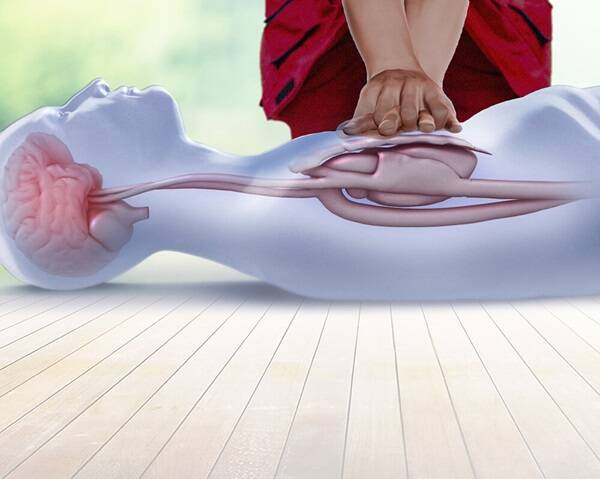CPR, or cardiopulmonary resuscitation, is one of the most important life-saving procedures that anyone can learn. Through a combination of chest compressions and rescue breaths, you can come to the aid of a cardiac arrest victim and even potentially save their life. Since so many cardiac arrests (in addition to other medical emergencies) occur outside of a hospital, training bystanders in CPR is a crucial step to save lives.
But what exactly is involved in performing CPR? While most of us might be familiar with chest compressions and rescue breaths, there are other steps and precautions you should be aware of. Here, we’re taking a closer look at the essential steps of CPR to help you better understand this life-saving procedure.
WHY IS CPR SO IMPORTANT?
Simply enough, CPR can save lives. By performing this critical procedure, a bystander can stabilize a victim until paramedics arrive on the scene. Every year, cardiac arrest claims the lives of over 475,000 Americans. If more bystanders earn their CPR certification, this number could be dramatically reduced.
Following cardiac arrest, the heart is unable to pump blood throughout the body, which can quickly prove fatal or life-threatening. When blood isn’t able to move throughout the body, it can’t deliver oxygen and vital nutrients to the brain and other organs. This is especially hazardous for the brain. If the brain doesn’t receive oxygen for even just a few minutes, the victim can suffer permanent brain damage.
WHAT ARE THE STEPS OF CPR?
While most of us are familiar with chest compressions and rescue breaths, there are several other key steps to CPR. Before rushing to the aid of a cardiac arrest victim, it’s important to know all the CPR steps and understand how they relate to one another. Receiving professional CPR training and certification, of course, is critical to being able to deliver CPR safely and effectively.
As a starting point, here’s a brief look at the core steps of CPR:
1. Call 911.
The first thing to do before even beginning CPR is to call 911. This will ensure that medical assistance is on the way. CPR, while important, is only designed to be a temporary measure to keep the victim stable until help arrives. It is not intended to entirely “cure” the victim.
2. Assess the scene.
After calling for medical assistance, you should assess the scene of the emergency. While it’s important to act immediately in the event of a cardiac arrest, you don’t want to put yourself or others in harm’s way. If the scene is safe, you can then approach the victim and begin CPR.
3. Open the airway.
CPR should only be performed if the victim isn’t breathing, so you need to first check on this by opening the airway. First, carefully position the victim so that they’re lying flat on their back. Then, gently tilt their chin up and head back. This can also be an opportunity to check the airway for any choking hazard.
4. Check for breathing.
Once the airway is open, check to see if the victim is breathing. Place your ear over their mouth and listen carefully for a few seconds. If there is no noticeable breath, this is a sign that you need to provide CPR. The occasional gasp doesn’t count as normal breathing, so even if you hear this, the victim still needs CPR.
5. Chest compressions.
If you can’t detect consistent breathing, immediately begin chest compressions. This is where the physical aspect of CPR truly begins as you begin to help the heart pump blood throughout the victim’s body. Place one hand over the other, clasp them together, and place the heel of your hands just below their breastbone. With straight elbows, press hard and fast (at a rate of 100 times per minute) to give 30 compressions. Let the chest rise fully between compressions.
6. Rescue breaths.
Following chest compressions, you can begin providing rescue breaths. Ensuring that the airway is still open, pinch the victim’s nose so it’s closed and put your mouth fully over their own. Provide two rescue breaths and check to see that their chest rises. If it doesn’t you may need to reposition the airway or check for an obstruction in the airway.
7. Repeat the cycle.
Continue performing a cycle of chest compressions and rescue breaths until medical assistance arrives. If someone else nearby is also trained in CPR, you can take turns so that you don’t become exhausted.
BENEFITS OF BECOMING CPR CERTIFIED ONLINE
Nowadays, you can do almost anything online, including receiving an education. Many students are amazed to learn that they can earn their CPR certification through 100 percent online classes. This means you’ll never have to struggle through traffic trying to make it to a recreation center on time. You can receive a high-quality, professional CPR education without ever leaving the comfort of your home.
Online CPR certification is always much faster than the traditional, in-person model. If you need your CPR certification or CPR recertification fast, online is the way to go. Many students have even completed their courses in a matter of hours or days. Simply select your course, begin the lessons, and once you’ve passed your final test you can print off your instant proof of certification. It’s that convenient.
CONCLUSION – WHAT ARE THE STEPS OF CPR?
Every year, hundreds of thousands of lives are lost to cardiac arrest. Since so many of these incidents occur outside of a hospital and far from medical attention, the majority of cardiac arrests prove to be fatal. If more bystanders are trained in CPR, the survival rate for cardiac arrest victims can improve.
In addition to chest compressions and rescue breaths, several other important steps of CPR are critical to safely and effectively performing this life-saving procedure. Hopefully, this guide was a good place to begin. However, to truly master CPR, you should receive your CPR certification —which can now be done online.



